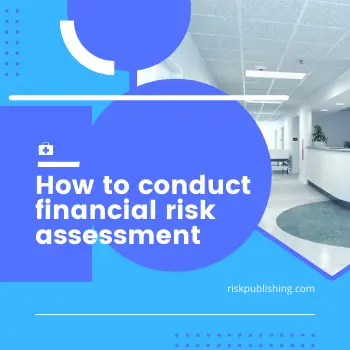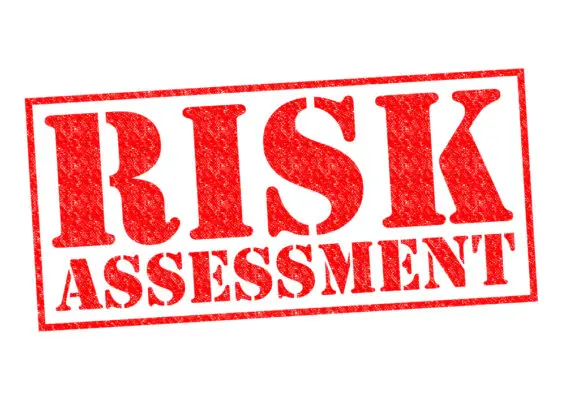ACH risk assessment templates are essential for organizations to evaluate and manage the risks associated with Automated Clearing House (ACH) activities. These templates provide a structured and systematic approach to identifying, assessing, and mitigating potential risks in ACH transactions.
The ACH system is widely used for various financial transactions, including direct deposits, electronic bill payments, and business-to-business payments.
However, like any other financial system, it is susceptible to certain risks, such as fraud, data breaches, and unauthorized access. Individual sections and High-risk activities for third-party service provider’s operations.
Payroll Service Bureaus and effective customers with originator customers seek Third-Party Senders file for processing and key practices for monitoring practices.
Organizations can effectively identify potential vulnerabilities and assess the likelihood and impact of various risks by utilizing a comprehensive risk assessment template specifically designed for ACH activities.
This enables them to develop appropriate risk mitigation strategies and implement necessary controls to safeguard their ACH operations.
Furthermore, these templates also serve as valuable documentation tools that assist in compliance with regulatory requirements.
Organizations can demonstrate their commitment to effective risk management practices by conducting regular risk assessments using standardized templates.
This article explores the significance of ACH risk assessment templates in mitigating potential risks associated with ACH activities. It will discuss the components of an effective template and highlight best practices for conducting a thorough assessment.
Additionally, it will emphasize the importance of training programs in enhancing employees’ understanding of ACH risks and promoting a culture of risk management within organizations.

ACH Risk Assessments
ACH, or Automated Clearing House, is an electronic network for financial transactions in the United States.
An ACH transaction involves transferring funds electronically between two bank accounts using this network.
It allows individuals and businesses to make payments quickly and securely, such as direct deposits and bill payments.
However, it’s important to note that ACH transactions are not the same as wire transfers or credit card transactions, which involve different processes and networks.
What is ACH?
Electronic funds transfer, commonly known as ACH, is a system that allows individuals and businesses to send and receive money electronically, facilitating seamless transactions without the need for physical checks or cash.
This system has become increasingly popular due to its convenience and efficiency.
Here are three key aspects of ACH that highlight its significance:
1) High-risk ACH activities: Certain transactions, such as high-value transfers or those involving international parties, carry a higher risk of fraud or misuse.
2) Third-party service providers: Many organizations rely on third-party service providers to handle ACH transactions. These providers need to have robust risk management controls in place to protect against potential vulnerabilities.
3) Compliance risk: ACH operations must comply with various regulatory requirements, including anti-money laundering regulations and consumer protection laws.
Implementing effective risk management systems helps organizations mitigate compliance risks associated with ACH activities.
Step Assessment
Welcome to the step assessment! We will guide you through each section individually, ensuring you have all the necessary information. Let’s get started!
Pre-Assessment Checklist
Before diving into the assessment, let’s review a quick pre-assessment checklist. This will help us identify any potential issues or areas of concern. Don’t worry, it’s just a few simple questions!
Payments Systems
Regarding payment systems, we have a wide variety of options available. From traditional methods to cutting-edge technologies, we’ve got you covered. Let us help you find the perfect solution for your needs!
Unusual Activity
We take unusual activity very seriously. We will investigate and take appropriate action if we notice any unusual activity. Your security is our top priority, so you can rest assured that we’ve got your back.
11 High-Risk Activities
In order to provide the best services possible, we have identified 11 high-risk activities that require special attention. Our team is well-equipped to handle these activities with precision and expertise. You’re in good hands!
Provision of Services
We hold ourselves to the highest standards when it comes to providing services. We strive to exceed your expectations and deliver exceptional service every step of the way. Your satisfaction is our ultimate goal.
Third-Party Service Providers
We understand the importance of third-party service providers in today’s business landscape. Whether you’re an originator, a direct customer, or a third-party sender, we have solutions tailored to your specific needs. Continuity test plans and business continuity planning for unauthorized returns
Increased Corporate-Wide and Customer Reliance
We recognize the increased reliance that both our corporate-wide and customer base have on our services. Rest assured, we are committed to delivering effective solutions that meet and exceed your expectations.
Third-Party Sender Arrangements
Third-party sender arrangements can be complex, but we’re here to simplify the process. Our experts will guide you through each step, ensuring a smooth and seamless experience. Trust us to handle your third-party sender arrangements with the utmost care.
Consumer Debit Transactions
Consumer debit transactions are an integral part of the modern economy. We have developed efficient and secure systems to facilitate these transactions, providing peace of mind. Your financial well-being is our top priority.
Frames for Consumer Debit
The importance of frames for consumer debit transactions. Our innovative solutions are designed to optimize the user experience, making the process seamless and enjoyable. Say goodbye to complicated and clunky systems!
Debit entries are the first thing we need to talk about. They are important for file processing and file totals. We also have limits for files that need to be considered. Online access is another key aspect to keep in mind. And let’s not forget about disposal practices, which are crucial for data security.
Regarding data security, banks need to have sound, risk-based controls in place. This includes transaction limits and an effective process for resetting transactions. We also have a separate process for transaction clearing, which the National Automated Clearing House Association oversees.
When it comes to audits, there are several steps involved. It starts with an initial review, followed by a compliance review and a review of originator information. It’s important to have experienced audit staff to ensure accuracy.
Different types of businesses have different transaction types and key control functions. Transaction support and audit functions also play a role in daily and multi-day settlements. Settlement accounts and dates must be carefully managed to prevent fraud schemes like mask fraud.
For online applications, having a contractual relationship and taking mitigating action when necessary is essential. If any issues arise, remedial action should be taken promptly.
We also have a specific section dedicated to third-party payment processors, which requires additional training and proper auditing.
To wrap things up, auditor training is important, and having an audit preparation checklist can make the process smoother.
Understanding these aspects and conducting a thorough third-party ACH risk assessment, organizations can develop a comprehensive and effective risk management program that addresses transaction, credit, and other potential risks involved in electronic fund transfers.
What is an ACH Transaction?
An ACH transaction refers to the electronic transfer of funds between financial institutions, providing a streamlined and secure method for individuals and businesses to initiate and receive payments.
This type of transaction is facilitated through the Automated Clearing House (ACH) network, which allows for batch processing of transactions, reducing costs and improving efficiency compared to traditional paper-based methods.
Financial institutions must implement robust risk management policies and compliance risk management systems to ensure the smooth operation of ACH transactions.
These systems should encompass various aspects such as business continuity plans, direct access controls, sound business practices, payment application security measures, third-party management protocols, and identification of potential risks.
Adhering to these guidelines, financial institutions can mitigate risks associated with ACH transactions while maintaining the integrity and security of the payment system.

What ACH Transactions Are Not
Contrary to popular belief, ACH transactions should not be confused with wire transfers or credit card payments as they operate on different systems and have distinct characteristics.
Understanding what ACH transactions are not is crucial for assessing the risks associated with these types of transactions.
To clarify, here are some key differences between ACH transactions and other forms of payment:
– Unlike wire transfers, which involve immediate funds transfer between financial institutions, ACH transactions typically take longer processing time.
– Credit card payments occur in real-time, while ACH transactions are processed in batches.
– While credit card payments require the involvement of both the payer and payee’s banks, ACH transactions only require authorization from the payer’s bank.
– Wire transfers often involve higher transaction fees compared to ACH transactions.
– Unlike credit card payments that offer consumer protection against unauthorized charges, ACH transactions do not provide the same level of protection.
Understanding these distinctions helps stakeholders such as commercial customers, operations staff, and legal frameworks evaluate potential high-risk activities. Implementing internal controls like dual control and cross-channel risk assessments can mitigate various risks within payment systems.
How to Mitigate the ACH Risks
Implementing robust authentication processes and regularly monitoring transactions are essential to mitigate ACH risks.
The first step in the risk mitigation process is to conduct a thorough risk assessment. This involves evaluating factors such as bank risk exposure, technology-related risks, reputation risks, and potential fraudulent or illegal activities. A preassessment checklist can be used to ensure all relevant areas are considered.
It is also important to have a comprehensive risk library that outlines specific risks and corresponding control measures. Additionally, implementing strong suspicious activity monitoring systems can help promptly detect any unusual or fraudulent activity.
Another crucial aspect is managing third-party relationships by thoroughly vetting partners and regularly reviewing their compliance with security standards.
Following these steps, organizations can significantly reduce their exposure to ACH-related risks.
ACH Risk Management Training Programs
Implementing comprehensive ACH risk management training programs can provide organizations with the knowledge and skills to effectively identify, assess, and mitigate risks associated with Automated Clearing House transactions.
These training programs aim to equip employees with a thorough understanding of the comptroller for operational risk guidelines and requirements related to ACH transactions.
Organizations can better determine appropriate controls and measures by educating employees on evaluating the level of risk posed by different ACH activities.
Training also emphasizes the importance of audit activities in monitoring higher-risk ACH activities and ensuring compliance with established guidelines.
Additionally, these programs highlight the significance of managing risks associated with third-party service providers’ operations by establishing ongoing access reviews, implementing risk-based data security controls, and setting debit exposure thresholds.
Ultimately, this training enhances an organization’s ability to maintain a robust ACH risk management framework and minimize potential vulnerabilities.
Automated Clearing House Activities: Risk Management Guidance
Automated Clearing House activities require risk management guidance to ensure effective identification, assessment, and mitigation of potential risks associated with these transactions.
To achieve this, organizations should consider the following key factors:
– Origination activity: Organizations need to carefully monitor and assess the risks associated with ACH origination activities. This includes evaluating the security measures for transmitting data and ensuring compliance with regulatory requirements.
– Technology-related risks: Using technology in ACH processes introduces new risks, such as cyber threats and system vulnerabilities. Organizations must implement robust cybersecurity measures to protect against unauthorized access or data breaches.
– Risk through holdback: Organizations should establish policies and procedures for assessing the risk associated with holding back funds from high-risk ACH activities. This helps mitigate potential losses if fraudulent or unauthorized transactions occur.
– Third-party service providers: Organizations should conduct thorough due diligence to evaluate their capabilities in managing risks effectively when outsourcing ACH services to third-party providers.
– Customer funds availability: Organizations must have mechanisms in place to ensure the availability of customer funds when processing ACH transactions. This includes monitoring account balances, managing overdrafts, and promptly notifying customers of any issues.
Addressing these key areas, organizations can enhance their risk management practices related to ACH activities and provide a secure environment for themselves and their customers.
The Difference Between an ACH Audit and an ACH Risk Assessment
An essential aspect of managing ACH activities involves understanding the distinction between an ACH audit and an ACH risk assessment. While both are crucial components of risk management, they serve different purposes.
An ACH audit evaluates the effectiveness of internal controls and adherence to regulatory requirements. It examines various aspects such as transaction processing, settlement procedures, network services, and personnel accessing sensitive information.
On the other hand, an ACH risk assessment is a comprehensive evaluation of the organization’s exposure to risks associated with its principal business activity and high-risk ACH activities.
This assessment considers technology-related risks, third-party service providers, payment services offered by legitimate bank customers or originators, third-party senders, debit card transactions, corrections to files or credit files, increased corporate-wide reliance on electronic payments, and customer reliance on these services.
Conducting both audits and risk assessments regularly, organizations can ensure proper management of their ACH activities and mitigate potential risks effectively.
Frequently Asked Questions
What are the common types of ACH risks that businesses face?
Common types of ACH risks businesses face include unauthorized debits, data breaches leading to fraudulent transactions, and errors in processing. These risks can result in financial losses, damage to reputation, and legal consequences.
What are the key steps involved in conducting an ACH risk assessment?
The key steps in conducting an ACH risk assessment include identifying potential risks, evaluating their potential impact, assessing the likelihood of occurrence, determining controls and mitigation strategies, and documenting the findings.
What are some best practices for mitigating ACH risks?
Best practices for mitigating ACH risks include implementing strong authentication measures, regularly monitoring accounts and transactions, educating users about security best practices, implementing fraud detection systems, and establishing protocols for responding to incidents.
Are there any regulatory requirements or guidelines for ACH risk management?
Regulatory requirements and guidelines for ACH risk management include the Federal Reserve’s Regulation E, NACHA Operating Rules, FFIEC IT Examination Handbook, and OCC Bulletin on ACH Risk Management. Compliance with these standards is essential for effective risk mitigation.
How often should an organization conduct an ACH risk assessment?
An organization should conduct an ACH risk assessment on a regular basis to ensure the effectiveness of its risk management practices. The frequency of assessments may vary depending on factors such as industry standards and regulatory requirements.

Conclusion
Conducting ACH risk assessments is crucial for organizations to identify and mitigate potential risks associated with Automated Clearing House activities.
Businesses can effectively manage ACH risks by following risk management guidance and implementing training programs.
It is important to note that an ACH audit and an ACH risk assessment serve different purposes, with the former focusing on compliance while the latter assesses potential risks.
Organizations can ensure their ACH operations are secure and compliant by utilizing a comprehensive risk assessment template.

Chris Ekai is a Risk Management expert with over 10 years of experience in the field. He has a Master’s(MSc) degree in Risk Management from University of Portsmouth and is a CPA and Finance professional. He currently works as a Content Manager at Risk Publishing, writing about Enterprise Risk Management, Business Continuity Management and Project Management.

